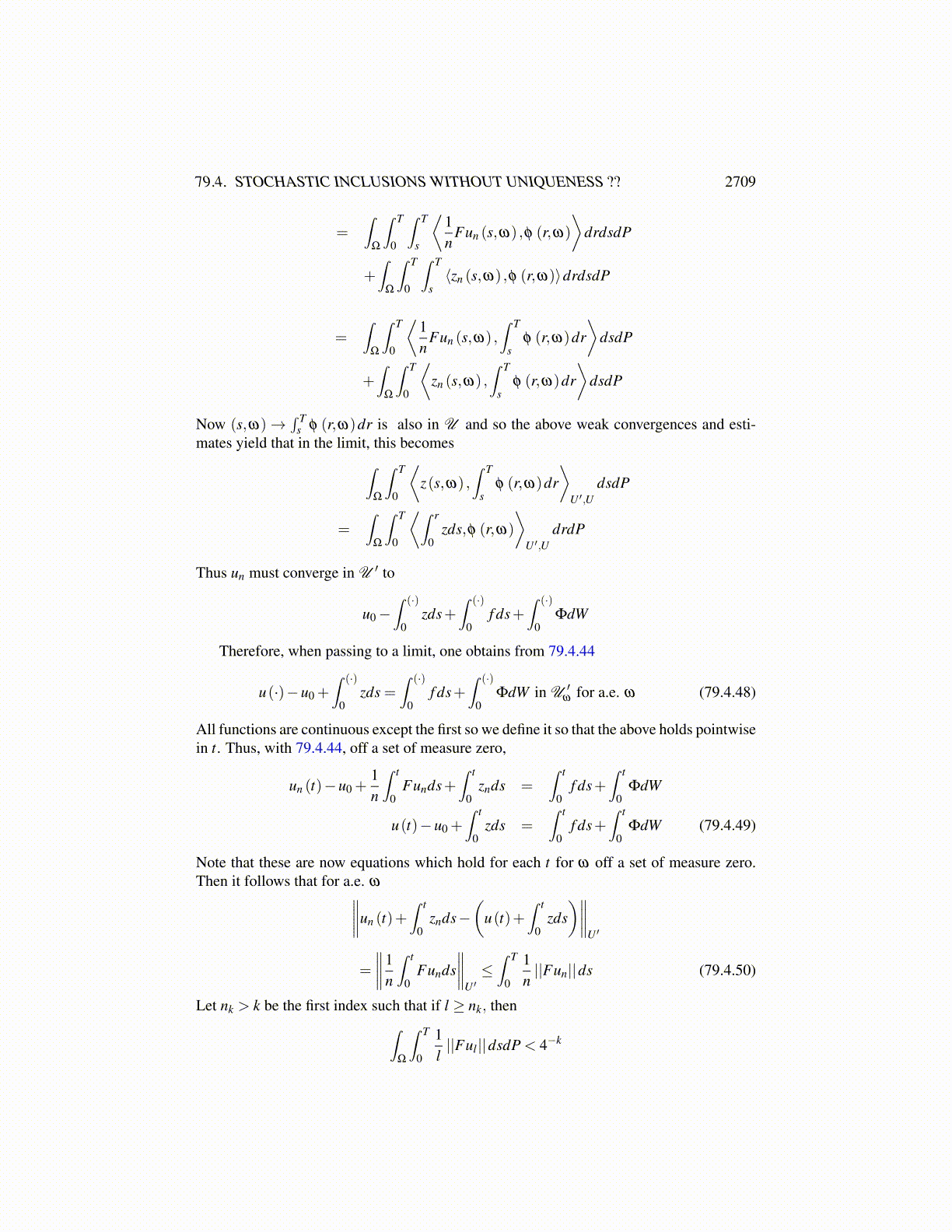
79.4. STOCHASTIC INCLUSIONS WITHOUT UNIQUENESS ?? 2709
about going from the solution to the regularized problem to one which is missing the Fterm for which A might not be monotone. Therefore, we assume the existence of such aprogressively measurable solution (u,z) to 79.4.44. Is it possible that without the 1
n F itmight never happen that λ I+A is monotone and yet still have appropriate estimates for A?I don’t have any examples right now. Thus it is not clear that this gives anything new.
The other consideration is a usable limit condition on Nemytskii operators, Â describedin the following lemma. Probably the earliest solution to this problem was given in [17].These ideas were extended to set valued maps in [18] and to implicit evolution inclusionsin [85]. Here the nonlinear operators will depend not just on t but also on ω where ω ∈Ω
for (Ω,F , P) a probability space.
Lemma 79.4.3 Let A be as described above in 1 - 4. Then for u ∈ V , Â(u) is a closed andconvex and bounded subset of V ′.
Proof: It is clear that Â(u) is convex. Indeed, if z,w are in this set, and λ ∈ [0,1] , then(λ z+(1−λ )w)(t,ω) ∈ A(u(t,ω) , t,ω) for (t,ω) off the union of the two exceptionalsets corresponding to z,w. Now let {zn} be a sequence in Â(u) which converges to z inV ′. Then pass to a subsequence which converges pointwise a.e. Let an exceptional setbe the union of the exceptional sets for each zn. Thus, off some set of measure zero Σ,zn (t,ω) ∈ A(u(t,ω) , t,ω) and we have zn (t,ω)→ z(t,ω) for (t,ω) off this exceptionalset of measure zero. Now the fact that A(u, t,ω) is closed for u ∈ V shows that z(t,ω) ∈A(u(t,ω) , t,ω).
Definition 79.4.4 For S a set in [0,T ]×Ω, Sω will denote {t : (t,ω) ∈ S} .
79.4.2 A Limit TheoremWe will make use of the following fundamental measurable selection lemma. It is proved in[87]. We will use this lemma in the context where the measurable space is (Ω× [0,T ] ,P)where P is the σ algebra of progressively measurable sets.
Lemma 79.4.5 Let Ω be a set and let F be a σ algebra of subsets of Ω. Let U be a sep-arable reflexive Banach space. Suppose there is a sequence
{u j (ω)
}∞
j=1 in U, where eachω→ u j (ω) is measurable and for each ω, supi ∥ui (ω)∥< ∞. Then, there exists u(ω) ∈Usuch that ω → u(ω) is measurable into U, and a subsequence n(ω), that depends on ω ,such that the weak limit
limn(ω)→∞
un(ω) (ω) = u(ω)
holds.
Next we derive some considerations of solutions to 79.4.44. From the Ito formula in79.4.44,
12|un (t)|2H −
12|u0|2H +
1n
∫ t
0⟨Fun,un⟩ds+
∫ t
0⟨zn,un⟩ds
−12
∫ t
0||Φ||2L2
ds =∫ t
0⟨ f ,un⟩ds+Mn (t) (79.4.45)